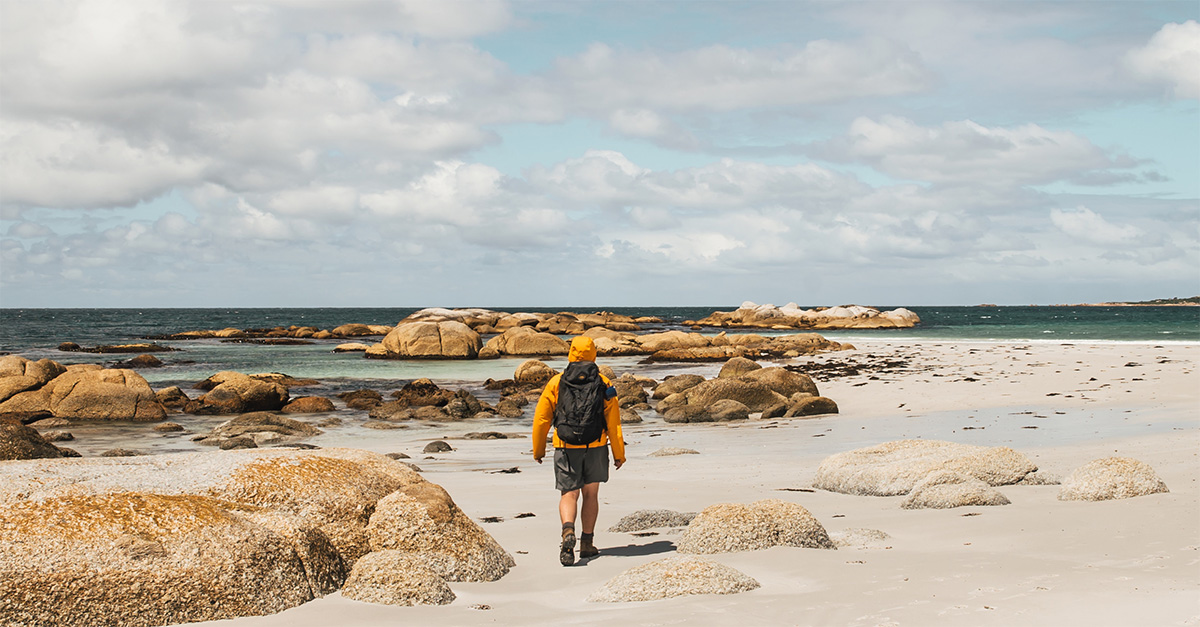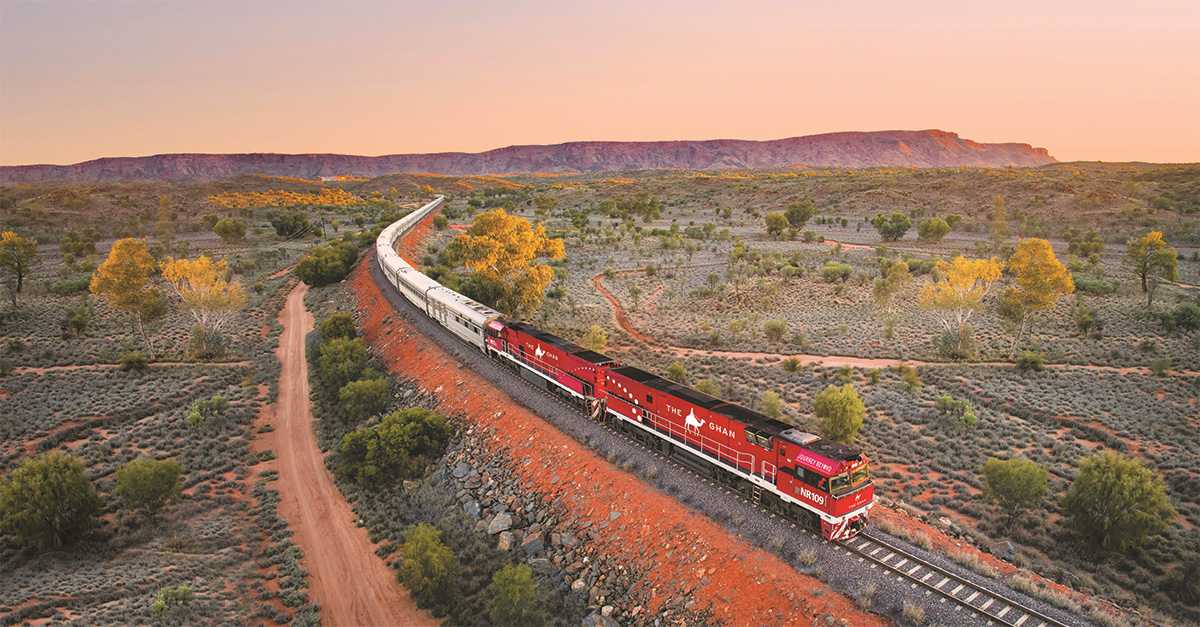Madagascar offers an African road trip with a difference, finds Meera Dattani.
Click here to download and save as a PDF.
When you’ve seen 17 species of lemurs in two weeks, you feel you can hang up your binoculars, hiking boots and camera and say: “Ahhhhh, job well done.”
Mind you, it isn’t all that surprising. This is Madagascar, after all; that enormous island 250 miles off Africa’s southeastern Indian Ocean coast. It’s home to a host of unique species, many of which evolved in their own way after the landmass broke off from what’s now India some 88 million years ago. Plus, it offers a road trip extraordinaire along the RN7 (national road 7).
This is an island that has inspired a film (and several sequels), achieved worldwide fame for its vanilla, and lures in and then hypnotises even the most experienced travellers.
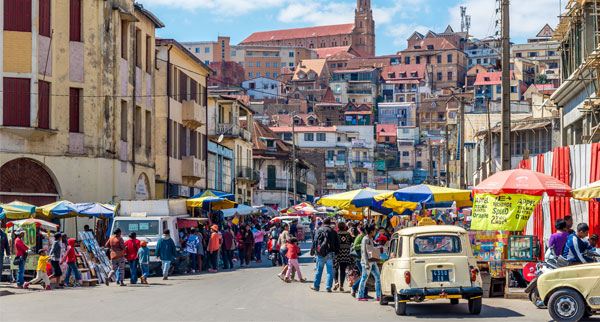
Driving the RN7
This 600-mile route weaves its way east to west from the capital through highland towns and dense rainforest, before the landscape morphs into semi-desert and Madagascar’s bizarre spiny forest.
The RN7 is perhaps the best introduction and deservedly popular with first-timers. Madagascar is more than twice the size of the UK, so overly ambitious itineraries will leave clients more exhausted than fulfilled.
In one fell swoop (two weeks with beach time), it provides a real sense of Madagascar’s vast and varied landscapes.
“By night, we spot tiny dwarf and mouse lemurs (the smallest) and find geckos, lizards and frogs under the moonlight.”
Most trips begin with a slight detour, four hours east of capital Antananarivo (Tana) to Andasibe-Mantadia National Park. “These eastern rainforests are the only place you’ll see the indri lemur,” our driver-guide Toky Andriamora tells us. The indri is the largest species of lemur, its distinct wail echoing through the canopy. “This region is also doing a lot of community tourism, using local guides,” he adds, pointing to Analamazaotra Forest Station, which is run by local organisation Association Mitsinjo, and community-protected rainforest reserve VOIMMA.
Lemurs – which are monkey-esque in behaviour but, in fact, are neither monkeys nor apes but prosimian primates – are one of the main draws for travellers to Madagascar. As well as the indri, we spot jumping sifaka lemurs, a startling sight as they bound about on their hind legs. By night, we spot tiny dwarf and mouse lemurs (the smallest) and find geckos, lizards and frogs under the moonlight.
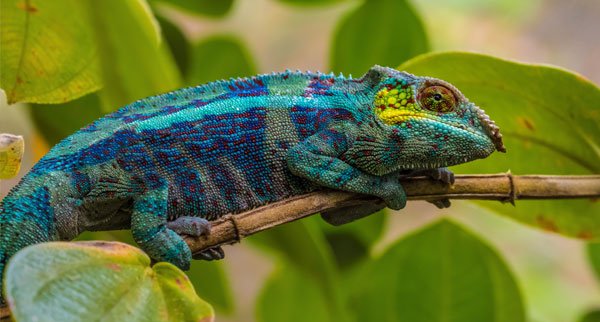
Flora and fauna
The island has a rich history and culture – French colonial rule, ancient tribes, a tradition of fady (taboos) to follow – but for many, it’s the endemic species, masterpieces of evolution, that are the initial pull.
In fact, over 80% of its flora and fauna is unique to the island: it’s home to half the world’s chameleon species, six of the world’s eight types of baobab, and nowhere but here will you find lemurs living in the wild.
Perhaps that’s why Madagascar has a slightly ‘unattainable’ quality to it, despite being served by flights from the UK to Tana via Addis Ababa, Paris, Nairobi, Johannesburg and Mauritius.
“It’s home to half the world’s chameleon species, six of the world’s eight types of baobab, and nowhere but here will you find lemurs living in the wild.”
Conveniently, Ethiopian Airlines also operates from the northwest island of Nosy Be, so visitors can fly into the capital, explore Madagascar, and finish up on the island, without doubling back into Tana.
That’s particularly useful as internal flights don’t come cheap – about £225 one-way, and most are only to and from Tana – and Nosy Be’s beach life, private island resorts, laid-back feel and diving and snorkelling spots are no bad way to end a tour.
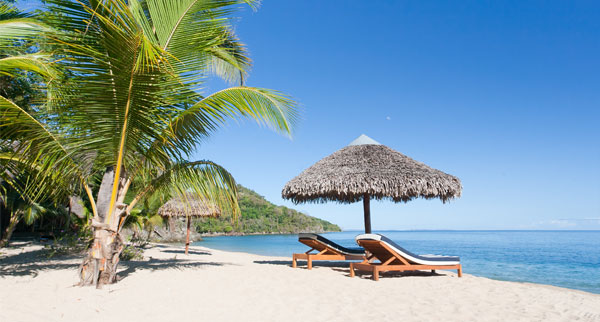
Road trippin’
Along the RN7, there’s a palpable sense of #fomo (fear of missing out) if you look away from the window for even a minute. Rainforests give way to lush valleys and hills as you head south, where zebu cattle graze in the fields and everyday life bustles on in Malagasy towns. The main highlands town of Antsirabe is one of the few where Madagascar’s French colonial history is evident, through its architecture and boulevards.
“Rainforests give way to lush valleys and hills as you head south, where zebu cattle graze in the fields and everyday life bustles on in Malagasy towns.”
Antsirabe is an interesting stop en route to Madagascar’s most popular park, Ranomafana. A national park since 1991, after Dr Patricia Wright discovered the golden bamboo lemur here, today it’s Madagascar’s premier conservation hub and is home to the Centre ValBio research station.
Plus, it’s probably the best place to see the most lemur species – not to brag, but two nights here served up golden bamboo, greater bamboo, brown, grey, black-and-white ruffed, red-fronted, Milne-Edwards’s sifaka, mouse and dwarf lemurs.
“Don’t forget to look down and around either,” Toky tells us. And he’s right. Our national park guide Stefan shows us bright-red giraffe weevils, ridiculously colourful mantella frogs and luminous-green Parson’s chameleons.
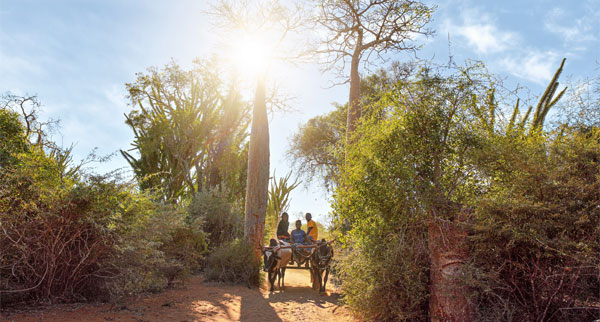
Stealing the scene
The ever-changing scenery of the RN7 is the key to this road trip’s appeal, as we drive further south towards semi-arid desert terrain. Stops include the community-run Anja Reserve, home to 400 playful ring-tailed lemurs, but the big ticket is Isalo National Park.
Populated with enormous rock formations, the national park’s remarkable setting is perfect for day hikes through magical gorges and glens.
Back on the road, the desert switches to ‘transitional forest’, where the western and southern terrains meet. As we pass the mining town of Ilakaka, Toky says it “used to be a bit Wild West”, referring to when gemstones were first discovered, and many flocked here to find fortune, at any price.
“Stops include the community-run Anja Reserve, home to 400 playful ring-tailed lemurs, but the big ticket is Isalo National Park.”
The RN7’s final stop is Ifaty, home to one of Madagascar’s most unusual habitats – spiny forest. Hot, dry and surreal, the forest is full of ancient baobab trees, spiky octopus trees and plants that can survive oven-like temperatures.
Many stop at Ifaty for a few days to wind down by the beach and enjoy ocean views, breeze and fresh seafood before taking a domestic flight to Tana from nearby airport Toliara.
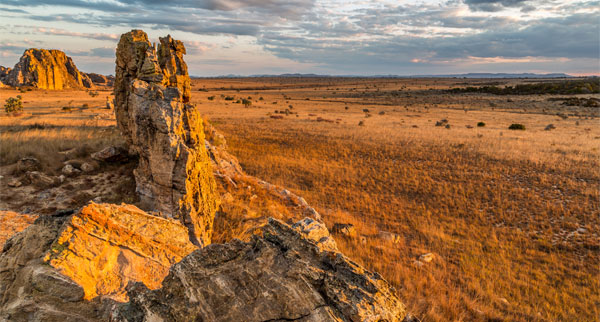
Capital gains
While many travellers don’t stop in Tana itself, either due to lack of time or because they are put off by its reputation, it’s an interesting city, and the best way to see urban life in Madagascar. Its steep streets and colonial architecture are the backdrop to busy markets, walkable neighbourhoods, great craft shopping and a lively restaurant and bar scene.
It’s also the country in microcosm; you’ll see the influence of French colonists and Chinese, Indian and African migrants in its architecture, food and culture. Tana is the best place for Malagasy cuisine, whether it’s rice with a tasty laoka sauce, the classic romazava – beef (zebu) broth with greens – or fancy restaurants at non-fancy prices.
“Steep streets and colonial architecture are the backdrop to busy markets, walkable neighbourhoods, great craft shopping and a lively restaurant and bar scene.”
The RN7 is just a taster of this fascinating Indian Ocean isle. The road trip doesn’t even take in the famous Avenue of the Baobabs or Madagascar’s limestone karst landscapes. But passing numerous ecosystems, cinematic landscapes and abundant wildlife, it’s a pretty good place to start.
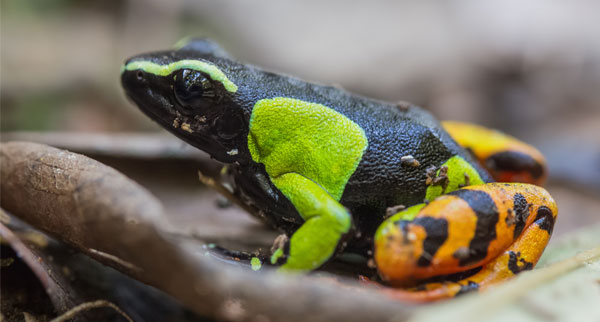
Five of the best species to spot
Lemurs: Madagascar has more than 105 species of lemur. The largest is the indri, at up to 90cm, and the smallest, at just 10cm and 30g, the Madame Berthe’s mouse lemur.
Frogs: Almost all of Madagascar’s 300 species of frog are endemic. The most striking include the bright-red tomato frog and the painted mantella.
“Look out for colourful panther and tiny Brookesia chameleons, and wellcamouflaged leaf-tailed geckos.”
Whale sharks: A group of junior male whale sharks inhabits the waters off a small bay on the island of Nosy Be. Book a snorkelling trip to swim with these giant (but gentle) creatures.
Lizards: Madagascar is home to more than 210 species including chameleons (half the world’s species), geckos, skinks and iguanids. Look out for colourful panther and tiny Brookesia chameleons, and wellcamouflaged leaf-tailed geckos.
Fossa: The main threat to lemurs (deforestation and poaching aside) is not easy to see, but if you spot something that looks like the love child of a cat, dog and mongoose, that’s the fossa.
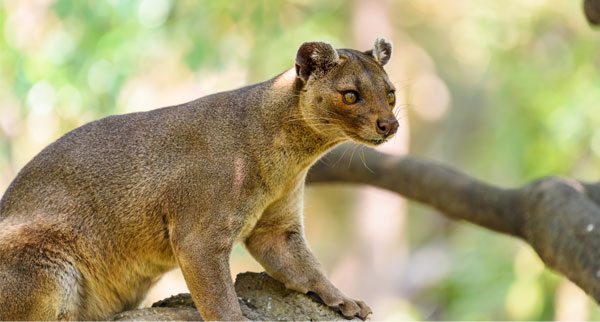
Getting there
Ethiopian Airlines flies daily from Heathrow (on an Airbus A350) and four times a week from Manchester (on a Boeing 787 Dreamliner) to Addis Ababa, with onward connections four times a week to Antananarivo and three times weekly to Nosy Be. Return fares from Heathrow to Antananarivo start at £647, and to Nosy Be from £625.
ethiopianairlines.com
Africa specialist Rainbow Tours offers a private, tailor-made 15-day trip, Classic Madagascar Overland: the RN7 Route and Andasibe. Prices start at £4,170 including international and domestic flights, the services of an English-speaking guide and driver, private vehicle, park permits, activities and accommodation (a visa costs extra).
rainbowtours.co.uk
Where to stay
Eco-lodges, five-star retreats, beach bungalows, tented camps, simple guesthouses and private island resorts – accommodation in Madagascar covers the full spectrum. Top picks include the cosy Vakona Forest Lodge in Andasibe-Mantadia National Park; Le Relais de la Reine for its wow-factor setting around Isalo National Park’s rock formations; the over-water decks of L’Heure Bleue’s bungalows on Nosy Be island; and the sheer elegance and magnificent city views from La Maison Gallieni, in Tana.
Read more
Gorilla trekking in Bwindi Impenetrable National Park
Exploring Ethiopia’s wildlife and ancient monuments
Wildlife and culture in Eswatini, formerly Swaziland


